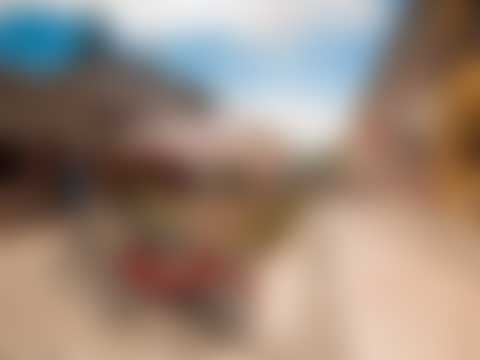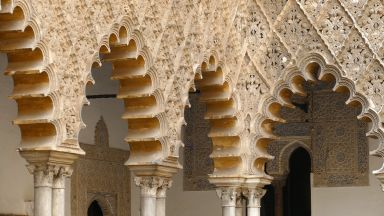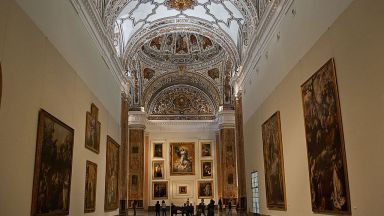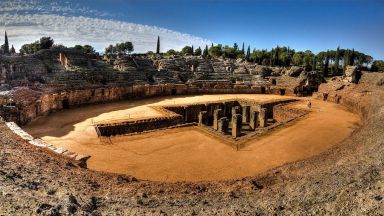Triana
Area in Seville
The neighborhood of Triana is one of the eleven districts that form the city of Seville. It’s located on the west bank of River Guadalquivir, on the other side of the historic centre of Seville. Triana is located on a peninsula between two branches of the Guadalquivir, narrowly linked to the mainland in the north. It’s known in Seville as “the independent republic of Triana”, with some locals claim never to have crossed the river and set foot in Seville!
Calle Betis, the street which runs along the waterfront, offers great views of Seville especially the Torre del Oro, the bullring and Giralda across the water, and has many of the city’s most popular restaurants, bars and nightclubs. Just off the waterfront among its narrow streets of Triana lie a great tapas bars and a flamenco scene. Calle Betis’ row of brightly-colored 18th-century townhouse facades is as impressive as any in northern Europe. There are several churches worth visiting near the riverfront in Triana. The most famous of these is Nuestra Señora de la O, north of the bridge.
To the north of Triana is the area of Isla de la Cartuja and Monasterio de Santa Maria de Las Cuevas, also know as the Charterhouse.
Triana and Flamenco
The old gitano (gypsy) quarter, held a large population of Romani people, was concentrated around the street called the Cava de los Gitanos, which is now the Pagés del Corro. Unfortunately many were displaced during a redevelopment projects 1970s, but it is considered the spiritual heart of flamenco: you can experience some of the most authentic performances in the city here, very late at night, in tiny, dark bars. Look out for the old communal patios, where the gitano families used to live, called corrales de vecinos, or communal homes, with many small rooms centered around a courtyard with a central fountain. The courtyard would be used for washing and cooking – and often singing and dancing too!
Mudéjar-Gothic Santa Ana, near calle Betis, is the oldest church in Triana, dating from 1276, look out for the pila de los gitanos (gypsy font) which is believed to pass on flamenco talent to children baptized there.
Festival of Velá de Santa Ana
If you want to enjoy the most authentic experience in Triana, visit the neighbourhood at the end of July, when the Velá de Santa Ana takes place from July 21st to 26th.
History of Triana
The first settlements in the Triana area were Roman and the district is said to owe its name to the Roman colony, Italica, founded by Emperor Trajan. During Muslim rule the neighborhood grew around a 10th century castle and the construction of a pontoon bridge joining Triana and Seville in 1171 further boosted its popularity. Unfortunately in 1248 Ferdinand III of Castile destroyed the Castillo de Triana and the bridge before taking Seville.
Since then, the neighborhood of Triana has been the cradle of artists, sailors, bullfighters, potters and Flamenco singers and dancers. The barrio used to be home to Seville’s world-renowned tile workshops and potteries – almost any tile you see in Seville’s churches, hotels, bars and private houses, as well as Plaza de España, will have been made in Triana.
The Triana appears in our Complete Guide to Visiting Seville!
This website uses affiliate links which may earn a commission at no additional cost to you!
Visiting Triana
Nearby Attractions
- Triana Market (0.2) km
Market in Seville - Castillo de San Jorge (0.2) km
Castle and Museum in Seville - Museo de la Cerámica de Triana (0.2) km
Museum in Seville - Torre del Oro (0.5) km
Museum and Tower in Seville - Plaza de Toros de Sevilla (0.5) km
Historic Building and Museum in Seville - Los Remedios (0.5) km
Area in Seville - Royal Shipyards of Seville (0.7) km
Historic Building and Shipyard in Seville - Torre de la Plata (0.7) km
Tower in Seville - Museo de Carruajes (0.8) km
Museum in Seville - Seville Cathedral (0.9) km
Cathedral, Historic Building and Mosque in Seville



